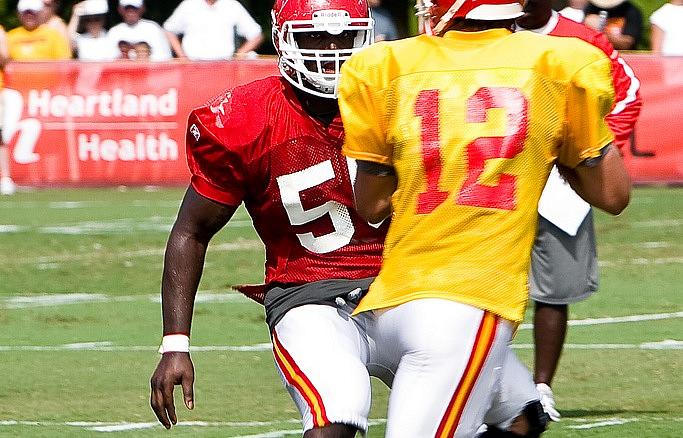Hit After Hit: Football Concussions and Effects Remain Elusive

This is the second part of a post by my brother, Andrew Heisel, an English instructor at Quinnipiac University in Connecticut, following the murder-suicide of Kansas City Chiefs linebacker Jovan Belcher
After the Chiefs' game on Sunday, quarterback Brady Quinn commented, "Hopefully people can learn from this and try to actually help if someone is battling something deeper on the inside than what they are revealing on a day-to-day basis."
Reports are that there were signs of Jovan Belcher's struggles, but Quinn is right that such problems can be difficult to see and that it's worth reaching out regardless of our uncertainty. Far from being able to say brain trauma may have caused those problems, such trauma itself can be just as veiled.
Setting aside the incentives players face to hide their symptoms, they might not even recognize them in the first place. And even if sideline evaluators do their best, no test is sure to capture the nuances of the injury. Moreover, identified injuries have been found to outlast their noticeable manifestations.
A study led by neuropsychologist Michael McCrea showed that even after the "symptoms, cognitive function, and balance" of concussion sufferers have returned to normal, "brain electrical activity remained abnormal" for perhaps as much as a month after. A two-year study by Purdue researchers of a high school team in Indiana using helmet sensors and brain imaging found that in addition to six reported concussions, "17 of the players showed brain changes even though they did not have concussions." This study revealed that even when players appear able to complete normal tasks, brain activity required to carry them out is markedly irregular.
In responding to Belcher's actions, then, let's not turn toward concussions because they may be as hard to get a handle on as any aspect of the man's psyche.
Before former Chicago Bear great Dave Duerson took his own life with a gunshot to the chest in February of 2011, he left behind a message requesting that his brain be studied for signs of damage. A subsequent analysis confirmed that he had chronic traumatic encephalopathy (CTE).
When former San Diego Charger great Junior Seau took his own life with a gunshot to the chest in May of this year, no such message was left behind and no history of erratic behavior existed to fit our rapidly-developing narrative of football-related brain trauma. Nonetheless, a study of his brain is underway, and while the results may never be made public, CTE seems a compelling way to rationalize Seau's choice.
When Belcher committed suicide, he shot himself in the head. His brain likely suffered so much damage that it would be impossible to study. We thus lose another rare chance to learn about the effects of football. But instead of speculating, an effective response to head injuries should involve a turn away from high profile events—the big hits Belcher may have sustained or his horrific final hours—toward an awareness of Belcher's commonality with his peers on the field.
While we cannot know how many current or former players suffer from CTE, we already have a growing body of evidence telling us that that on the field they are all undergoing the "repetitive mild traumatic brain injury" that is its precursor.
Despite the recent spate of suicides—six players in the last two years—each player should not be viewed as a potential danger to himself or others, but he should be viewed as a possible ongoing sufferer. The line between healthy and impaired minds is blurry, and so the healthiest approach for the players and the game would be to work to reduce the events that push players over that line—not the line toward criminal violence, but the line toward irreversible CTE. Such a step would involve not just reducing concussions, but also everyday brain trauma. The Sports Legacy Institute has advocated for a "hit count" threshold for every youth player, after which their play that season would cease. In considering the professional ranks, we should look askance not just at mid-week games, but also refuse to treat an expanded season as an inevitability, especially when a reduction would be more reasonable.
We shouldn't have to look to anomalous events to call for change; ordinary ones are troubling enough.
Photo by Barry Lenard, via Flickr.
Related Posts:
Hit After Hit: Hard to Blame Football for Jovan Belcher's Off-Field Violence
Hit After Hit: Focus on Most Jarring Football Collisions Misses the Point
A Public Death: NFL Concussion Crisis Documented with Death Certificates

